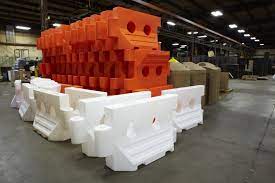Rotational Molding: The Most Recent in Plastic Shot Technologies
Rotational molding can be a method which has been around the world for more than half a century. It will allow manufacturers to generate plastic-type material elements with outstanding detail, making use of fewer natural resources than classic processes. In this post, we will proceed through rotational molding from beginning to end and explore the way it works.
Molds are made if you make an injection-molded version or sculpture out from clay-based or wax tart (or another delicate modeling moderate). The finished product is then presented metallic coating to ensure that when heated up, it does not burn during creation. Plastic materials are injected in to these molds at substantial-stress prices where by they amazing and harden almost instantly since they enter the sprue gate on their own way towards becoming molded products which are then ejected out of the fungus.
When plastic materials enter in a rotational molding equipment, these are heated up approximately about 270 diplomas Fahrenheit and injected in to a metal-lined tube with chilly drinking water coming from all guidelines at high charges (around 100 gallons each and every minute).
The plastic gets into via a door referred to as “sprue,” which is hooked up by hoses to a extruder brain that injects or mixes thermoplastic pellets so they can be easily cooled off and shaped. The revolutions within these cylinders develop a vacuum result as molten plastic cools down off more than alone mainly because it lacks any atmosphere bubbles to cause cooling down opposition. This allows for much quicker manufacturing times during the finished items.
Rotational shaped elements can be achieved with numerous ultimate looks. Rotational Molding is how plastics can be made to appear like metallic, cup, as well as rubberized. The details which can be duplicated on each mold is near countless as a result of rotational molding’s ability to generate incredibly complicated elements all at once.
The rotational molding method is very adaptable and can be used for numerous merchandise, which includes furniture or big parts like car bumpers. It’s also successful–getting about 90 moments to produce 120 parts an hour.
